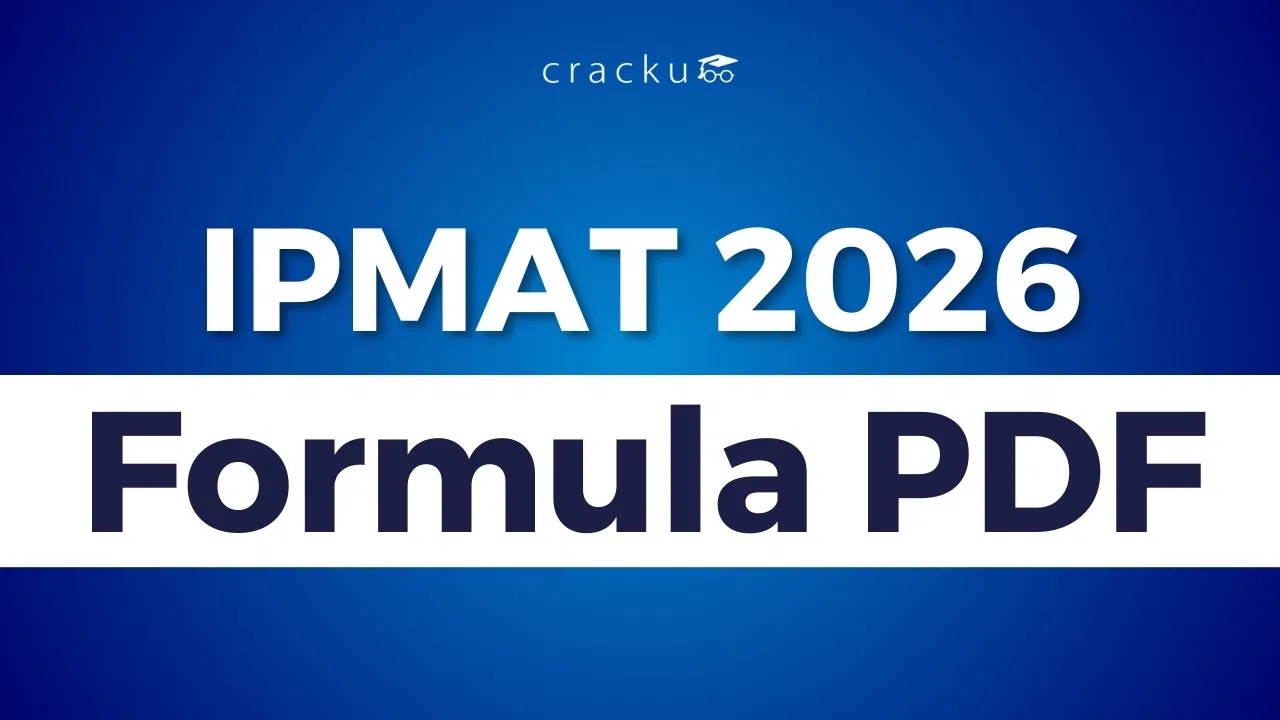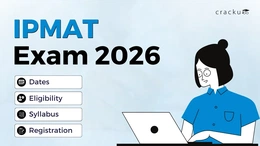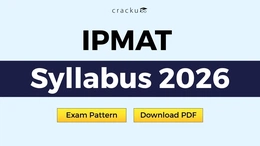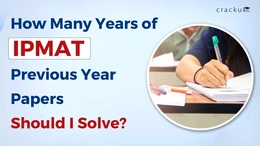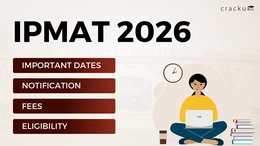IPMAT Formula PDF 2026 Free Download
MBA entrance exams like IPMAT test your problem-solving skills in Mathematics through topics such as Number Systems, Profit and Loss, Averages, Time and Work, Algebra, and Geometry.To perform well in the IPMAT Quantitative Aptitude section, mastering basic formulas is essential.
The IPMAT Formula PDF 2026 brings together all the key formulas in one place, making your preparation faster and more organized. It helps you revise quickly and improves accuracy in the exam.
Preparing for IPMAT may feel challenging at first, but once you get comfortable with the fundamental formulas, it becomes much easier. This article provides all the important IPMAT formulas from Arithmetic, Algebra, Geometry, Number Systems, and more. You can also download the complete IPMAT Formula PDF below for free.
IPMAT Formula Sheet
Here you'll find some of the most useful formulas for the IPMAT Quant section. These formulas cover all the important topics and are great for quick and easy revision. They’ll help you get ready for the exam faster and with more confidence. Check them out below:
Topic | PDF Link |
IPMAT Quadratic Equations Formulas | 📄 Download PDF |
IPMAT Simple Interest and Compound Interest | 📄 Download PDF |
IPMAT Time, Speed, Distance & Work Formulas | 📄 Download PDF |
IPMAT Set Theory and Venn Diagrams Formulas | 📄 Download PDF |
IPMAT Remainder Theorems Formulas | 📄 Download PDF |
IPMAT Ratio & Proportion Formulas | 📄 Download PDF |
IPMAT Progressions & Series Formulas | 📄 Download PDF |
IPMAT Profit And Loss, Discount Formulas | 📄 Download PDF |
IPMAT Permutations And Combinations Formulas | 📄 Download PDF |
IPMAT Number System Formulas | 📄 Download PDF |
IPMAT Mixtures And Alligations Formulas | 📄 Download PDF |
IPMAT Matrices and Determinants Formulas | 📄 Download PDF |
IPMAT Logarithms, Surds & Indices Formulas | 📄 Download PDF |
IPMAT Linear Equations Formulas | 📄 Download PDF |
IPMAT Inequalities Formulas | 📄 Download PDF |
IPMAT Geometry Formulas | 📄 Download PDF |
IPMAT Functions Formulas | 📄 Download PDF |
Bayes Theorem (Conditional Probability) for IPMAT | 📄 Download PDF |
Number Systems & Sequences
- Sum of first n natural numbers: n(n + 1) / 2
- Sum of squares of first n numbers: n(n + 1)(2n + 1) / 6
- Sum of cubes of first n numbers: [n(n + 1) / 2]²
- Sum of first n odd numbers: n²
- Sum of first n even numbers: n(n + 1)
Algebraic Identities
- (a + b)(a – b) = a² – b²
- (a + b)² = a² + b² + 2ab
- (a – b)² = a² + b² – 2ab
- (a + b + c)² = a² + b² + c² + 2(ab + bc + ca)
- a³ + b³ = (a + b)(a² – ab + b²)
- a³ – b³ = (a – b)(a² + ab + b²)
- a³ + b³ + c³ – 3abc = (a + b + c)(a² + b² + c² – ab – bc – ac)
- If a + b + c = 0, then a³ + b³ + c³ = 3abc
Geometry & Mensuration
- Area of Rectangle: l × b
- Perimeter of Rectangle: 2(l + b)
- Diagonal of Rectangle: √(l² + b²)
- Area of Triangle: ½ × base × height
- Pythagoras Theorem: a² + b² = c²
Coordinate Geometry
- Distance between (x₁, y₁) and (x₂, y₂): √[(x₂ – x₁)² + (y₂ – y₁)²]
- Midpoint Formula: ((x₁ + x₂) / 2, (y₁ + y₂) / 2)
Profit, Loss & Percentage
- Profit = SP – CP
- Loss = CP – SP
- Profit % = (Profit / CP) × 100
- Loss % = (Loss / CP) × 100
Time, Work & Efficiency
- Combined Work Relation: M₁ × D₁ / W₁ = M₂ × D₂ / W₂
- Extended Work Formula: M₁ × D₁ × T₁ × E₁ × W₁ = M₂ × D₂ × T₂ × E₂ × W₂
Trigonometry
- sin θ = Perpendicular / Hypotenuse
- cos θ = Base / Hypotenuse
Percentage & Discounts
- Percentage = (Value / Total Value) × 100
- Successive Discounts Formula: Final Price = Original × (1 – d₁/100) × (1 – d₂/100)
Quick Conversions
- 25% = 1/4
- 12.5% = 1/8
- 75% = 3/4
Why is the IPMAT Formula PDF Important?
The IPMAT Formula PDF 2026 is an essential tool for quick revision and accuracy improvement. It helps aspirants keep all important formulas handy and reduces the time spent searching across multiple sources.
Key Benefits:
- All-in-one Revision Tool: Everything you need for IPMAT Quant in one place.
- Faster Calculations: Memorizing formulas allows quicker problem-solving which saves a lot of time during exams.
- Better Accuracy: Regular formula revision reduces silly mistakes.
- Time Saver During Exam: Easy recall helps manage time efficiently.
How to Use the IPMAT Formula PDF Effectively
Make the most of your formula sheet with these smart tips:
- Create Your Version: Rewrite tricky formulas in your own words for better understanding.
- Daily Recall: Revise formulas daily to keep them fresh in memory.
- Timed Practice: Use the PDF while solving timed questions to improve speed.
- Focus on Weak Areas: Highlight or mark formulas you often forget and review them more frequently.
